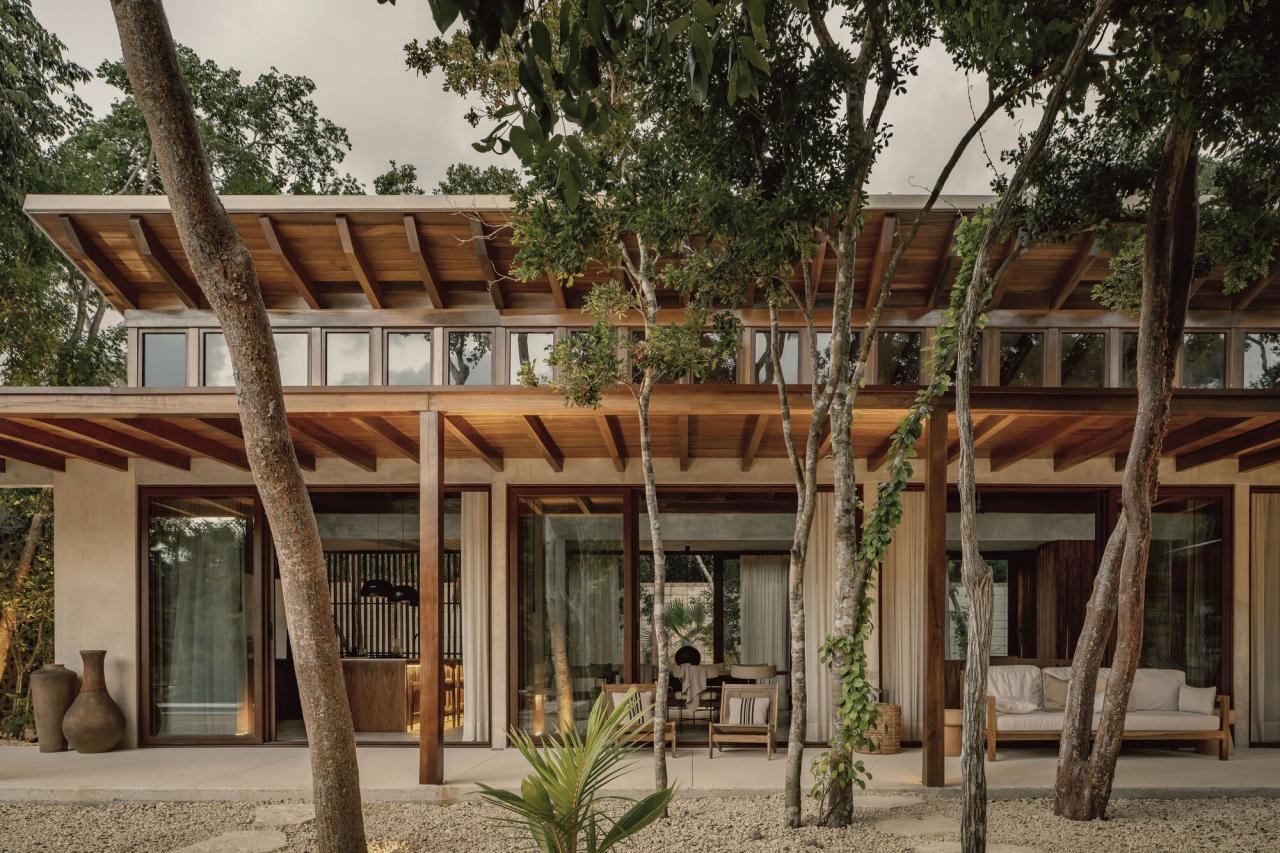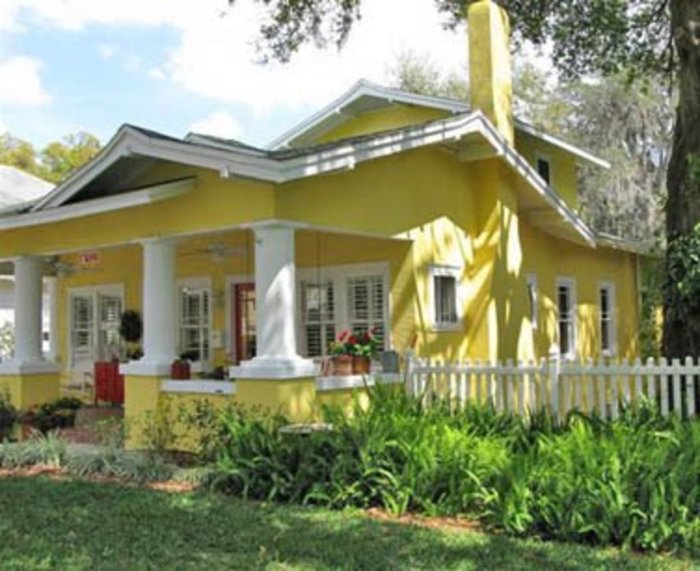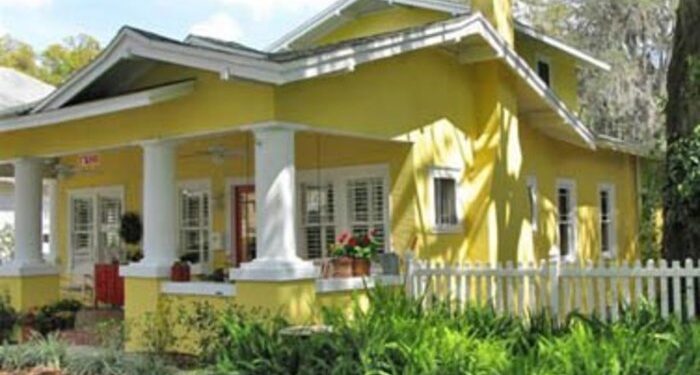Exploring the realm of exterior finishes tailored for tropical climates unveils a myriad of options designed to withstand the unique challenges posed by such environments. From durable materials to maintenance tips, this guide delves deep into the world of exterior finishes best suited for tropical regions.
As we navigate through the different types of finishes, considerations to keep in mind, popular materials used, and best practices for application and maintenance, you'll gain valuable insights on how to protect your building in tropical weather conditions.
Types of exterior finishes suitable for tropical climates

In tropical climates, it is essential to choose exterior finishes that can withstand high humidity, intense sunlight, heavy rainfall, and potential mold growth. Different types of finishes offer varying levels of durability, aesthetics, and maintenance requirements.
1. Stucco
Stucco is a popular choice for tropical regions due to its durability and resistance to moisture. It is a cement-based finish that can be textured or smooth, providing a versatile look for exterior walls. However, stucco may crack over time and require periodic maintenance to patch and repaint.
2. Fiber Cement Siding
Fiber cement siding is another excellent option for tropical climates as it is resistant to rot, insects, and moisture. This type of finish mimics the look of wood without the maintenance requirements, making it a durable and low-maintenance choice. However, it can be more expensive than other finishes.
3. Vinyl Siding
Vinyl siding is a cost-effective option for homeowners in tropical climates. It is resistant to moisture, mold, and insects, making it a low-maintenance choice. However, vinyl siding may fade over time and is not as durable as other finishes.
4. Tropical Hardwood Cladding
Tropical hardwood cladding, such as teak or mahogany, provides a natural and luxurious finish for exterior walls. These woods are naturally resistant to rot and insects, making them ideal for tropical climates. However, hardwood cladding requires regular maintenance, such as staining or sealing, to preserve its appearance.
5. Ceramic Tiles
Ceramic tiles are a durable and waterproof finish for exterior walls in tropical regions. They come in a variety of colors and patterns, allowing for creative designs. However, ceramic tiles can be expensive to install and may require grout maintenance over time.
6. Exterior Paint
Exterior paint is a versatile option for homeowners looking to refresh their home's appearance. In tropical climates, it is essential to choose high-quality paint that is mold and fade-resistant. Regular maintenance, such as repainting every few years, is necessary to protect the walls from the harsh elements.
Considerations when choosing exterior finishes for tropical climates

When selecting exterior finishes for buildings in tropical climates, it is crucial to consider various factors to ensure the longevity and aesthetics of the structure. Factors such as durability, resistance to humidity, and UV protection play a significant role in determining the suitability of a finish for tropical environments.
Impact on Maintenance
The chosen exterior finish can have a direct impact on the overall maintenance requirements of the building. Finishes that are not suited for tropical climates may deteriorate quickly, leading to frequent repairs and replacements. On the other hand, selecting finishes specifically designed to withstand the challenges of tropical weather can significantly reduce maintenance costs and efforts in the long run.
Climate-specific Challenges
Tropical climates present unique challenges such as high humidity, intense sunlight, heavy rainfall, and potential exposure to saltwater in coastal areas. These factors can accelerate the wear and tear of traditional exterior finishes, making it essential to choose materials that can withstand these conditions.
Opting for finishes that are mold-resistant, UV-stable, and water-repellent can help mitigate the impact of these climate-specific challenges and ensure the longevity of the building's exterior.
Popular materials used for exterior finishes in tropical regions
In tropical regions, various materials are commonly used for exterior finishes to withstand the challenging weather conditions. Let's explore some popular options below:
Stucco
Stucco is a durable and versatile material made of cement, sand, and lime. It is known for its ability to resist mold, mildew, and fading, making it ideal for tropical climates. Stucco also provides excellent thermal insulation, helping to keep buildings cool in hot weather.
Many homes and commercial buildings in tropical regions showcase stucco exteriors due to its durability and aesthetic appeal.
Fiber Cement
Fiber cement is another popular choice for exterior finishes in tropical climates. This material is composed of cement, sand, and cellulose fibers, offering a strong and moisture-resistant solution. Fiber cement is known for its resistance to termites, rot, and fire, making it a reliable option for tropical weather conditions.
Many modern homes in tropical regions feature fiber cement siding for its low maintenance and long-lasting performance.
Tropical Hardwood
Tropical hardwood, such as teak, mahogany, or ipe, is a luxurious option for exterior finishes in tropical regions. These woods are naturally resistant to water, insects, and decay, making them well-suited for humid and hot climates. Tropical hardwoods are prized for their durability, strength, and rich color variations, adding a touch of elegance to buildings in tropical settings.
Many upscale resorts, villas, and beachfront properties use tropical hardwood for their exterior finishes to create a luxurious aesthetic that blends seamlessly with the natural surroundings.
Best practices for application and maintenance of exterior finishes in tropical climates
When it comes to applying and maintaining exterior finishes in tropical climates, there are several best practices to consider in order to ensure longevity and durability. Proper application methods, regular maintenance routines, and specific treatments can all play a crucial role in preserving the finish in such challenging conditions.
Recommended Methods for Applying Exterior Finishes
- Ensure proper surface preparation by cleaning and priming the surface before applying the finish.
- Choose high-quality materials that are specifically designed for tropical climates to withstand humidity and harsh weather conditions.
- Follow manufacturer's instructions carefully and apply the finish in thin, even coats to achieve proper adhesion and coverage.
Strategies for Regular Maintenance
- Regularly inspect the exterior finish for any signs of wear, cracking, or peeling, and promptly address any issues to prevent further damage.
- Clean the finish periodically with mild soap and water to remove dirt, mold, and other contaminants that can degrade the finish over time.
- Consider applying a protective coating or sealant to the finish every few years to enhance its durability and resistance to the elements.
Specific Treatments and Coatings
- Applying a UV-resistant topcoat can help protect the finish from sun damage and fading in tropical climates.
- Consider using a mold and mildew-resistant primer or paint to prevent the growth of mold and mildew in humid conditions.
- Applying a waterproofing sealer can help protect the finish from water damage and prolong its lifespan in tropical climates.
Last Word
In conclusion, finding the best exterior finish for your tropical climate involves a careful balance of durability, maintenance, and climate-specific challenges. By understanding the characteristics of each type and following recommended practices, you can ensure a long-lasting and visually appealing finish for your building.
FAQ Summary
What are the key factors to consider when choosing exterior finishes for tropical climates?
Factors such as durability, resistance to humidity, and UV protection play a crucial role in selecting the right exterior finish for tropical regions.
Which materials are commonly used for exterior finishes in tropical climates?
Materials like stucco, fiber cement, and tropical hardwood are frequently used due to their ability to withstand tropical weather conditions.
How can regular maintenance prolong the life of exterior finishes in tropical climates?
Regular maintenance, including cleaning and inspections, can help preserve the finish and prevent deterioration in tropical climates.




